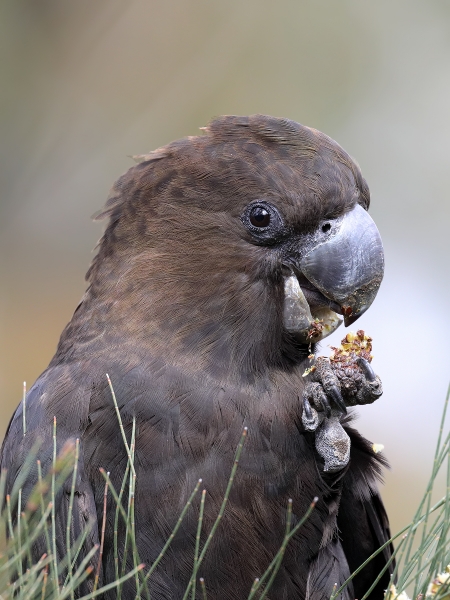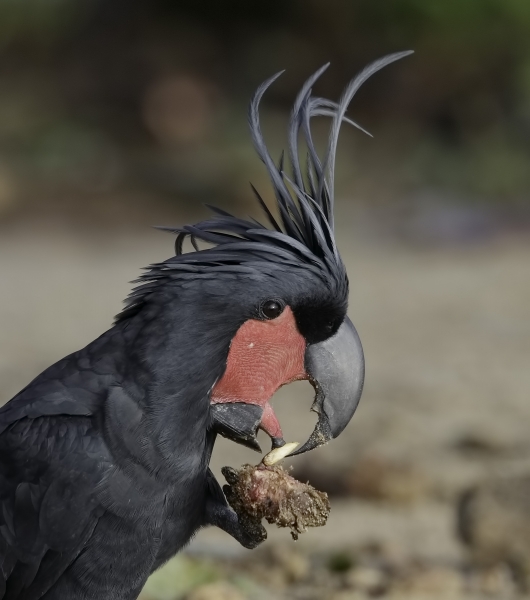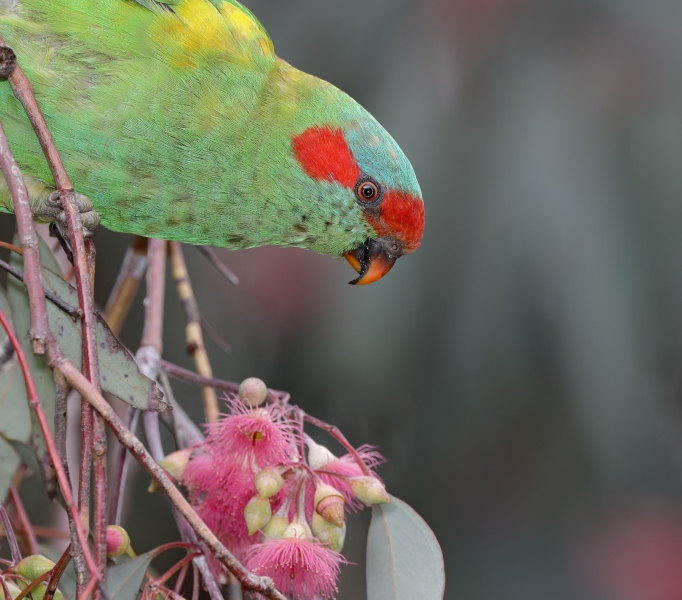There were many excellent images submitted to this competition making it very difficult to choose the winner. In most competitions there are a few stand-out entries making judging relatively easy but in this one there were many potential winners. Any of the images I have commended could be winners on another day in another competition, so these photographers should not be too disappointed, they are all outstanding pictures. In making my decision I gave careful consideration to a number of factors. My first consideration was how well the image aligned with the description of the theme: The focus is on the head and bill but an appropriate amount of neck and upper body (minimum please) as a base for the head and bill is acceptable. The challenge is to obtain sharpness and clarity with the identifiable features of the head and bill including those features that identify the species.
This description highlights one of the major challenges, ‘sharpness and clarity’. To achieve this required the image to be captured with plenty of pixels on the head and bill while at the same time managing digital noise. It was pleasing to see most photographers did a good job in this regard. Mystery Reviewers were also asked to consider the quality of the comments provided by photographers to explain the reason why they entered the image in the competition. Comments should be interesting and informative with the aim of helping viewers to better understand the photographer’s creative intentions, perhaps indicate how the image was captured, and briefly mention any relevant bird lore illustrated in the image. In a close contest like this one, the quality of the photographer’s comments was more important than usual.
To assess the merit of each entry I followed general principles widely used in judging photographs. I was looking for interesting subject matter, good composition, special lighting, exquisite timing and technical competence. Images with two or more of these attributes were the ones that caught my eye. I was particularly looking for images where the bird was doing something more than just looking at the camera. Unfortunately, this meant that many fine head and shoulders portraits did not make the cut. Birds with engaging eye-contact, singing, preening, feeding or with prey in the bill were the ones that were more likely to make it to the top of my list.
Winner: Glossy Black-Cockatoo, by Con Duyvestyn (Image ID 41173)
The Glossy Black-Cockatoo is a shy species in decline through land clearing, insensitive forest management and extensive habitat destruction due to bushfires. The image fits the theme perfectly and has lots of subtle qualities that add up to more than the sum of the parts. It beautifully captures the bird quietly feeding on one of its favourite foods, casuarina seeds. The soft light enabled the photographer to achieve excellent sharpness and clarity in a faultless technical presentation. Good composition with the bird sitting comfortably in the frame has enhanced the engaging eye-contact. The smooth out of focus background allows the bird to stand out and feel close to the viewer while the green leaves at the bottom of the picture serve to frame the bird’s shoulders and direct the viewer’s attention up to the eye and bill. This is a very successful portrait and a worthy winner.
Highly Commended: Palm Cockatoo, by Doug Castle (Image ID 41203)
The Palm Cockatoo is Australia’s largest cockatoo species with a spectacular crest and eye-catching ruddy cheek skin making it instantly recognizable. The soft light permitted good sharpness and clarity, and the photographer has accurately rendered the skin tone of the bird’s cheek. I was also impressed by the hint of gloss, especially in the crest and the excellent eye detail with highlight showing the sun just above the horizon. The smooth out of focus background and simple composition is effective in focusing the viewer’s attention on the massive bill, the interesting tongue, and the beach almond. The shot is also a good example of exquisite timing. The only point holding this image back from top honours is what appears to be slight movement blur in the almond husk.
Commended: Gang-gang Cockatoo, by Stephen Garth (Image ID 41069)
Gang-gang Cockatoos are a great favourite with bird lovers with gorgeous plumage, a jolly face, gentle disposition and a quirky call. The birds are regular visitors to parks and gardens during winter in the foothills of the Great Dividing Range in SE Australia. The image shows a female enjoying hawthorn berries, one of their favourite winter foods. The image fits the theme very well, has good sharpness and clarity, and nicely captures the key ID points for this species. It is a good example of how feeding can add the extra interest we look for when judging a picture and the timing is impeccable showing the moment the lower mandible is excising the berry. The composition is also good with the bird comfortably positioned in the frame against a soft supporting background. The only constructive criticism I want to make is the lighting. It is obvious that fill flash was used with a slow shutter sync speed like 1/250 sec. This had the unfortunate consequence that there is some movement blur in the bunch of berries, there is also flash-shadow in parts of the scene and slight ‘steel-eye’ diminishing the otherwise engaging eye contact.
Commended: Brown Goshawk, by Kim Wormald (Image ID 41324)
Now it’s time to take a break from cockatoo photos and have a close look at the stunning Brown Goshawk portrait. This is the only ultra-close-up picture in the competition helping it to stand out from the others. The genre can be polarizing with some people preferring to see the whole bird, while others find the rich detail a source of immense interest. This image has that quality in spades with the sharpness and clarity we expect and minimal digital noise. Then there is good composition, nice light and the photographer has successfully captured the frightening bill and penetrating eye inspiring a feeling of awe and trepidation.
Commended: Musk Lorikeet, by Stephen Garth (Image ID 41013)
My final commended award goes to this gorgeous Musk Lorikeet. The bright colours make this a crowd pleaser but there is much more to enjoy. The image fits the theme nicely with good sharpness and clarity and the key ID points show well. The photographer has not over-saturated or over-sharpened the image and the colours are accurately rendered in the soft light. The eucalyptus buds and flowers are a meaningful addition to the scene, leaving the viewer in no doubt that the bird is feeding on nectar. Without the flowers the image would lack a photographic narrative. The out of focus background is unobtrusive allowing the bird to be the focus of attention, heightened by the engaging eye contact. The only misgiving I have about this image is the cropping, an assertive portrait format would work better. A finished size of 1800 px high and about 1400 px wide with the eye near the intersection of the one-third lines in the upper right of the frame would considerably improve the visual impact of the image.
At the outset I mentioned the high standard of entries in this competition. My short-list was 32 images, almost one-third of the total, unprecedented in my experience. Of the 32 images, I gave the same rating to 18, all of which were just shaded by the winner and commended images. I have tried to be as objective as possible in applying the criteria set out in my introduction; how well does the picture meet the theme, are the comments useful, is the subject interesting, do the composition and lighting work, has the photographer captured a special moment, and are there any obvious technical shortcomings . To the winner and commended photographers, my warm congratulations, your pictures are outstanding. Congratulations too to the other competitors so many of whom were unlucky to miss out on an award but will benefit from the experience.




